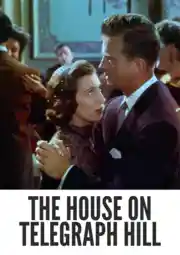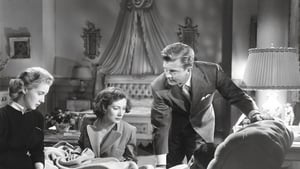Contact: [email protected]
Video Sources 0 Views

Synopsis
[ez-toc]




The House on Telegraph Hill Colorized 1951: A Noir Masterpiece Rediscovered
In the vast landscape of classic cinema, some films manage to transcend time, maintaining their allure across generations. One such gem is “The House on Telegraph Hill Colorized,” a noir masterpiece directed by the acclaimed Robert Wise. Originally released in 1951, this film boasts stellar performances by Valentina Cortese and Richard Basehart, and a narrative that has stood the test of time. However, our focus here is not on the original black and white version but on the controversial colorized adaptation that has sparked debates among cinephiles.
Read Media File Transfer Agreement: Terms and Conditions
Read FAQ
From Black and White to Color: A Controversial Transition
“The House on Telegraph Hill Colorized” made its debut in the golden age of cinema, a period when black and white was not just a technical limitation but an artistic choice. The monochromatic palette added a layer of mystery and suspense, characteristics synonymous with the film noir genre. Director Robert Wise, known for his astute storytelling and visual prowess, crafted a narrative that unfolded seamlessly within the constraints of black and white cinematography.
Decades later, the decision to colorize such a classic stirred mixed emotions among film enthusiasts. Purists argued vehemently for the preservation of the film’s original essence, insisting that colorization would dilute the atmospheric charm of the noir genre. On the other side of the debate were those who saw colorization as a gateway to introducing classic films to newer audiences who might be resistant to the black and white aesthetic.
In the case of “The House on Telegraph Hill Colorized,” the colorization process was undertaken with meticulous care. It aimed not to overshadow the original vision but to enhance the viewer’s experience. This delicate balance between preservation and adaptation became the linchpin of the colorized version’s success.
Reimagining San Francisco: A Vibrant Palette Unveiled
San Francisco, a city synonymous with fog-laden streets and shadowy alleys, plays a pivotal role in “The House on Telegraph Hill Colorized.” In the original black and white rendition, the cityscape was a canvas of contrasts and shades. The decision to breathe color into this urban landscape was a bold move that paid off artistically.
Colorization techniques brought San Francisco to life in a way that was unprecedented. Iconic locations, pivotal to the film’s narrative, now pulsated with a vibrancy that mirrored the city’s allure. The marriage of color palettes, lighting effects, and strategically placed shadows not only preserved the noir ambiance but elevated it.
The film noir genre, known for its stark visual style, found new avenues for expression through the strategic use of color. Shadows became deeper, and the contrast between light and dark more pronounced. The colorized version of “The House on Telegraph Hill Colorized” succeeded in revitalizing the setting without sacrificing the genre’s inherent moodiness.
Unraveling the Hues: A Colorful Journey Through the Plot
A comprehensive journey through the plot of “The House on Telegraph Hill Colorized” in its colorized form reveals a nuanced approach to storytelling. Key scenes, where color takes center stage, serve to foreshadow events and reflect the characters’ emotions. The colorization process, rather than being a mere aesthetic overlay, becomes an integral part of the narrative.
As the plot unfolds, the symbolism behind the use of certain colors becomes apparent. Each hue carries a significance that adds layers to the storytelling. What was once a monochromatic tale of intrigue is now a canvas of colors that guide the audience through the characters’ emotional arcs. The colorized adaptation, therefore, does not just add visual appeal; it deepens the connection between the audience and the unfolding drama.
Performances Transcending Black and White
Valentina Cortese and Richard Basehart, the leading actors in “The House on Telegraph Hill Colorized,” delivered performances that etched their characters into the annals of cinema history. In the colorized version, these performances transcend the limitations of black and white, offering a new level of depth.
Valentina Cortese’s portrayal of a complex femme fatale gains additional dimensions through the masterful use of color. Specific scenes highlight her seductive allure, with color becoming a tool for intensifying her character’s mystique. Richard Basehart’s depiction of vulnerability and menace benefits from the added nuance that color brings. The duality of his performance is accentuated, drawing the audience deeper into the psychological intricacies of the characters.
The colorization process, far from overshadowing the actors’ work, becomes a collaborator in their storytelling. It emphasizes the subtleties, making the performances even more captivating for modern audiences.
The House on Telegraph Hill in Color: A Critical Perspective
The reception of the colorized release among critics and audiences has been varied. Some applaud the enhancement of the visual experience, commending the meticulous approach taken to preserve the noir atmosphere. Others remain skeptical, questioning the necessity of tampering with a cinematic classic. This diversity of opinion reflects the ongoing debate surrounding colorization and its role in film preservation.
In assessing the critical perspective, it’s crucial to acknowledge that opinions are inherently subjective. The colorized version of “The House on Telegraph Hill Colorized” has its champions who appreciate the film’s rejuvenation, citing its ability to captivate modern audiences. Conversely, there are those who argue that the original black and white version encapsulates the era’s cinematic charm and should remain untouched.
Preserving Cinematic History Through Colorization
The role of colorization in introducing classic films to new generations cannot be understated. For many, the prospect of watching black and white movies might be a deterrent, leading to a potential loss of appreciation for cinematic treasures. Colorization, when done with care and respect for the filmmaker’s intent, can serve as a bridge between the past and the present.
However, the debate surrounding film preservation is not one-dimensional. Purists argue for the authenticity of preserving films in their original monochromatic form, emphasizing the importance of experiencing movies as they were intended by their creators. The clash between these opposing viewpoints continues to shape the landscape of film restoration and preservation.
In the case of “The House on Telegraph Hill Colorized,” the colorized adaptation stands as a testament to the potential benefits of colorization when executed with reverence. It opens the door for discussions on how we can balance the preservation of artistic intent with the need to engage contemporary audiences.
The House on Telegraph Hill Colorized: A Timeless Masterpiece Reimagined
In conclusion, “The House on Telegraph Hill Colorized” in its colorized form emerges not as a dilution of a classic but as a testament to the adaptability of cinematic art. By embracing colorization while staying true to its noir roots, the film stands as a prime example of how old movies can be reimagined for contemporary audiences without losing their essence.
The enduring legacy of “The House on Telegraph Hill” within the film noir genre is further amplified through its colorized adaptation. The impact is not just visual; it’s a reminder that classic films can be revitalized for a new era without compromising their intrinsic qualities.
As we navigate the evolving landscape of film preservation and adaptation, “The House on Telegraph Hill Colorized” serves as a beacon—a cinematic journey that transcends the confines of black and white, inviting audiences to experience the allure of a timeless masterpiece in a new and vibrant light.










